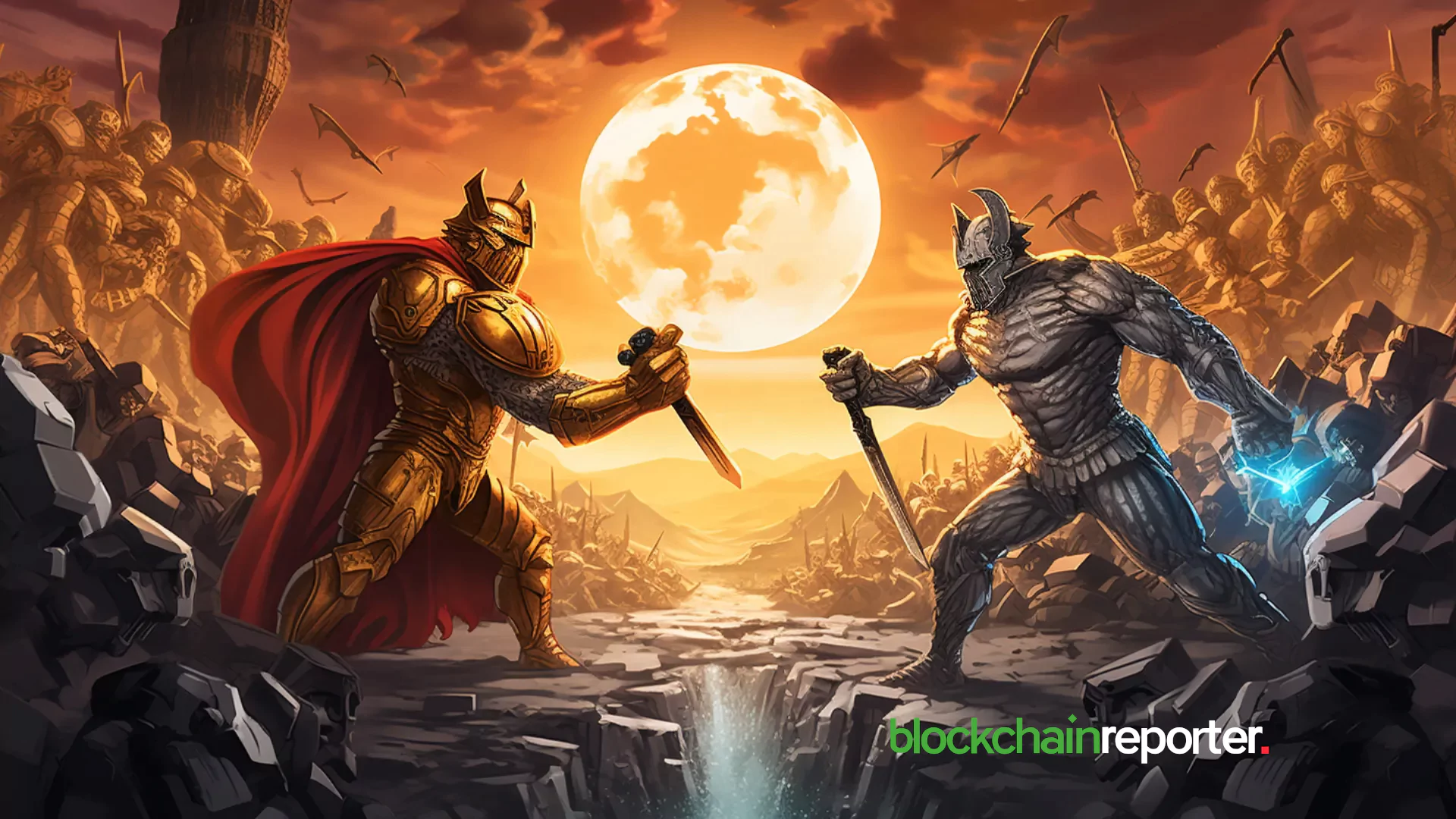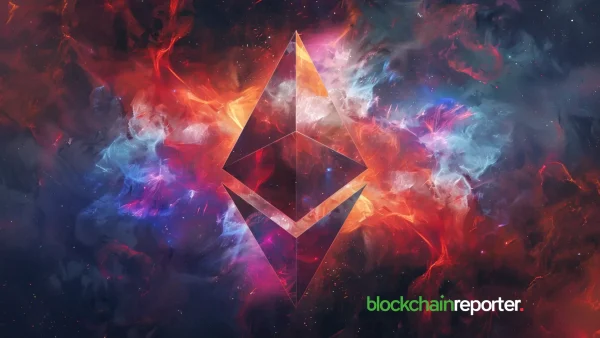
- 0.2. Cryptocurrency Pioneers: From Satoshi's Vision to Ethereum's Ecosystem
- 0.4. Digital Currency Revolution: Trading, Market Cap, and Investment
- 0.6. Technological Innovations: Blockchain Platforms and Beyond
- 0.8. Price Dynamics and Market Sentiments
- 0.10. Beyond the Basics: The Wider Cryptocurrency Landscape
- 0.12. Cryptocurrency Safety and Storage
- 0.14. Technical Developments: Forks and Updates
- 0.16. The Role of Tokens and Coins
- 0.18. Regulations, ICOs, and the Legal Landscape
- 0.20. Education and Community
- 0.22. Innovation and Future Trends
- 0.24. In Conclusion
In the rapidly expanding world of digital assets, two names reign supreme: Ethereum and Bitcoin. Often posed against each other, the comparison of “Ethereum vs Bitcoin” has intrigued crypto enthusiasts and investors alike. This article dives deep into the distinctive features, advantages, and challenges of both.
Cryptocurrency Pioneers: From Satoshi’s Vision to Ethereum’s Ecosystem
Bitcoin: The brainchild of the pseudonymous creator, Satoshi Nakamoto, Bitcoin emerged as the first decentralized cryptocurrency. Labelled as ‘digital gold’, its primary purpose was to serve as a store of value. Satoshi’s vision was to establish a peer-to-peer network that eliminates the need for intermediaries in financial transactions.

Ethereum: Vitalik Buterin, Ethereum’s creator, introduced a platform that goes beyond being just a digital currency. Ethereum brought the concept of smart contracts and the Ethereum Virtual Machine (EVM) to the forefront, fostering the growth of decentralized applications (DApps).
Digital Currency Revolution: Trading, Market Cap, and Investment
Cryptocurrency Trading: Both ETH and BTC have solidified their presence on major digital asset exchanges. With pairs like ETH/BTC dominating liquidity metrics, trading strategies often involve this duo.
Market Capitalization: Bitcoin’s dominance in terms of market cap has been unchallenged for years. However, Ether’s market cap is also impressive, especially with the surge in decentralized finance (DeFi) projects on its platform.
Crypto Investment: For potential investors, understanding the difference between token vs coin, Ethereum’s future potential, and Bitcoin’s legacy is crucial. While some view Bitcoin as a safer store of value, others are drawn to Ethereum’s advancements and its ever-evolving ecosystem.
Technological Innovations: Blockchain Platforms and Beyond
Blockchain Consensus Algorithms: Bitcoin operates on a Proof of Work (PoW) mechanism, rewarding Bitcoin miners for validating transactions. Ethereum, while initially using PoW, is transitioning to Proof of Stake (PoS), emphasizing staking and network validators.
Scalability and Upgrades: Ethereum’s sharding and proposed updates aim to address scalability issues. Bitcoin, meanwhile, introduced the Lightning Network and upgrades like Taproot to enhance transaction speed and flexibility.
Gas Costs and Transactions: Ethereum transactions involve gas fees, which can fluctuate based on network congestion. Bitcoin transactions also have fees, though the dynamics differ significantly.
Price Dynamics and Market Sentiments
Bitcoin Price Trends: Over the years, Bitcoin’s price has seen significant fluctuations, influenced by various factors like market demand, adoption rates, regulatory news, and technological advancements. Tracking BTC price is essential for both seasoned traders and new investors to gauge the market’s overall sentiment.
Ethereum Price Evolution: Similarly, Ethereum’s price has its own tale to tell. With the proliferation of decentralized apps and smart contracts on its platform, the ETH price often reflects its utility and adoption in the wider blockchain ecosystem. Moreover, events like network upgrades and changes in gas fees can also influence its price trajectory.
Beyond the Basics: The Wider Cryptocurrency Landscape
Altcoin Comparison: Beyond Ethereum and Bitcoin, the altcoin market provides a plethora of options, but understanding the ETH vs BTC dynamics remains fundamental for crypto education and resources.

Digital Currency Economics and Real-world Applications: Bitcoin’s max supply of 21 million coins presents a deflationary model. Ethereum, on the other hand, fuels its network and applications through Ether, expanding its real-world applications.
Decentralized Networks and Financial Decentralization: Both Ethereum and Bitcoin champion the cause of decentralization. While Bitcoin aims at financial freedom, Ethereum’s DeFi projects and platforms like Decentralized Autonomous Organizations (DAOs) redefine traditional finance systems.
Cryptocurrency Safety and Storage
Understanding the dynamic world of crypto also means delving into cryptocurrency wallets. Both Bitcoin and Ethereum offer myriad wallet options, from hardware to software, ensuring users have a safe place to store their assets. As these digital currencies grow, so does the need for secure and user-friendly storage solutions.
Technical Developments: Forks and Updates
In the world of blockchain, hard forks and soft forks are significant events. Both Ethereum and Bitcoin have experienced them. For instance, Bitcoin underwent a crucial Segregated Witness (SegWit) upgrade to enhance its scalability. Similarly, Ethereum has seen numerous updates and forks, with ERC-20 becoming a standard for tokens on its platform.
The Role of Tokens and Coins
Apart from being regular cryptocurrencies, Ethereum introduced the concept of tokens, notably ERC-20 and Non-Fungible Tokens (NFTs). While Bitcoin remains a pioneering coin, Ethereum’s tokens have led to various use cases, from gaming to art and beyond.

Regulations, ICOs, and the Legal Landscape
With the rise of digital currencies came the wave of Initial Coin Offerings (ICO). Ethereum, with its smart contract functionality, became a popular platform for ICO launches. However, crypto regulations and legal stances vary globally, with authorities grappling to understand and frame these innovations within existing legal structures.
Education and Community
A notable aspect of these digital assets is their supportive cryptocurrency communities. Resources for cryptocurrency education, from the foundational Bitcoin whitepaper to detailed Ethereum documentation, have made it easier for enthusiasts and newcomers alike to understand these technologies.
Innovation and Future Trends
Ethereum and Bitcoin are continuously evolving, and with that comes the need for second-layer solutions and ways to address current limitations. Both are working on solutions to increase scalability, security, and efficiency. Moreover, as the crypto market cycles ebb and flow, the relative positions and innovations of Ethereum and Bitcoin will be pivotal to watch.
In Conclusion
Navigating the realm of digital assets can seem daunting. Yet, understanding the foundational pillars, Ethereum and Bitcoin, illuminates the path. As digital currency economics evolve and adoption trends surge, the “Ethereum vs Bitcoin” debate will continue to spark interest. Whether you’re drawn to Bitcoin’s store of value proposition or Ethereum’s smart contract capabilities, one thing is clear: the digital currency revolution is here to stay.
Frequently Asked Questions
What is the main difference between Ethereum and Bitcoin?
Bitcoin was created as a decentralized digital currency, whereas Ethereum was developed as a platform for decentralized applications and smart contracts. Bitcoin focuses on being a store of value, while Ethereum aims to facilitate peer-to-peer contracts and applications.
What are cryptocurrency wallets?
Cryptocurrency wallets are digital tools that allow users to store, receive, and send cryptocurrencies. They come in various forms, including software, hardware, and paper wallets.
What are hard forks and soft forks in blockchain?
Both are types of protocol upgrades. A hard fork is a permanent divergence from the previous version of the blockchain, requiring all nodes to upgrade. A soft fork, on the other hand, is backward-compatible, meaning the new rules can still recognize the old rules.
What is Segregated Witness (SegWit)?
SegWit is a protocol upgrade introduced in Bitcoin to solve the issue of transaction malleability and improve scalability. It allows for more transactions to be included in a block.









